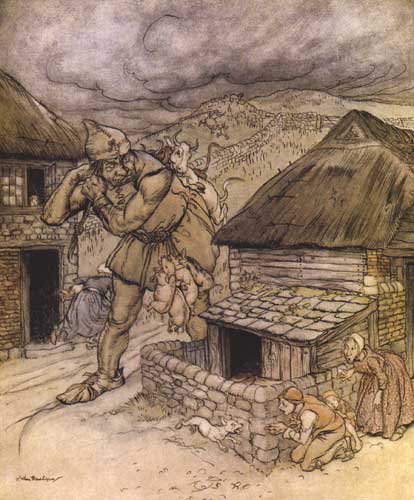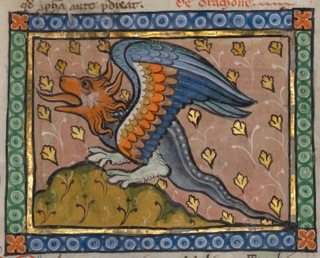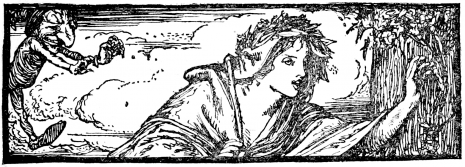 When I was a kid, I remember being traumatized by an especially violent version of Grimm’s Fairy Tales that we had on our shelf. Deep dark forests, child-eating wolves, ogres, giants, witches, and trolls (most of whom were also child-eating). As you may know, these stories weren’t initially geared toward kids, but came from an oral tradition of Central European folk tales passed along for generations, which the brothers Grimm compiled and first published in 1812.
When I was a kid, I remember being traumatized by an especially violent version of Grimm’s Fairy Tales that we had on our shelf. Deep dark forests, child-eating wolves, ogres, giants, witches, and trolls (most of whom were also child-eating). As you may know, these stories weren’t initially geared toward kids, but came from an oral tradition of Central European folk tales passed along for generations, which the brothers Grimm compiled and first published in 1812.
What I find rather fascinating is that the events in some of these tales weren’t too far afield from the grim existence of central European lives in the Middle Ages. As William Manchester describes it in his A World Lit Only By Fire, much of central Europe really was surrounded by a vast and menacing forest, and there really were child-eating boars, bears, and wolves, as well as actual outlaws who attacked travelers and rarely got caught. (6). So it wasn’t much of a leap for people to believe in ogres, giants, witches, and trolls. And dragons of course.
I came across a story about Venetian cloth dyers in the fifteenth century in Amy Butler Greenfield’s book A Perfect Red: Empire, Espionage, and the Quest for the Color of Desire. At that time, Venice was a major world power, and its dyers had helped make it so. Their techniques for dyeing cloth–especially the very expensive scarlet–were shrouded (sorry) in secrecy, and guild members were sworn not to divulge their methods. Those who violated the guild rules faced brutal consequences.
But another way that Venetian dyers kept their techniques secret, according to Greenfield, was to spread ghost stories, which prevented people from hanging around the dye-making district of Venice. And people believed these tales. One told of a white ghost that haunted the dyeing district. Another was a specter in a black cape who hunted people “foolish enough to approach the dyeworks after dark.” (32)
A Dragon; Unknown; Thérouanne ?, France (formerly Flanders), Europe; about 1270; The Getty Museum; 83.MR.173.89
Steel, Flora Annie. English Fairy Tales. Arthur Rackham, illustrator. New York: Macmillan Company, 1918.
Grimm’s Household Tales, 1912. Brothers Grimm, Marian Edwardes (translator), R. Anning Bell (illustrations)